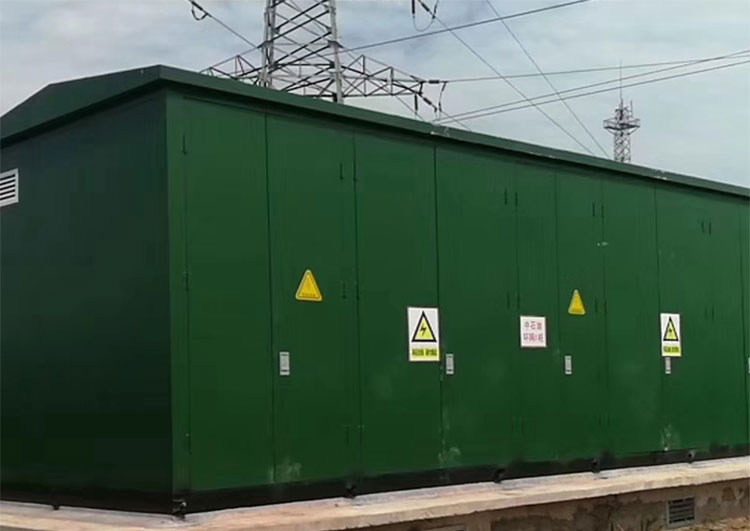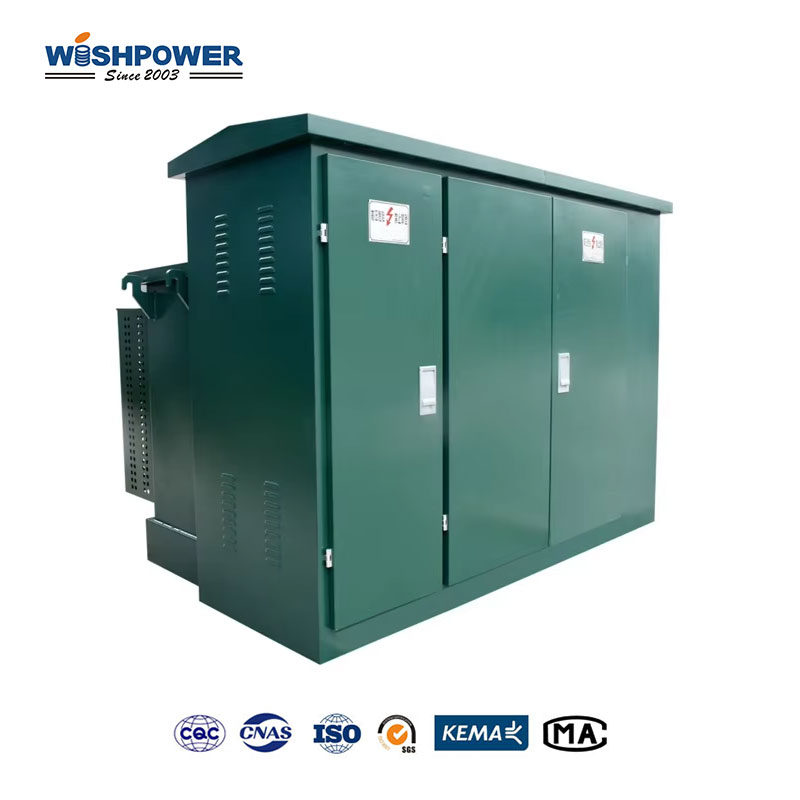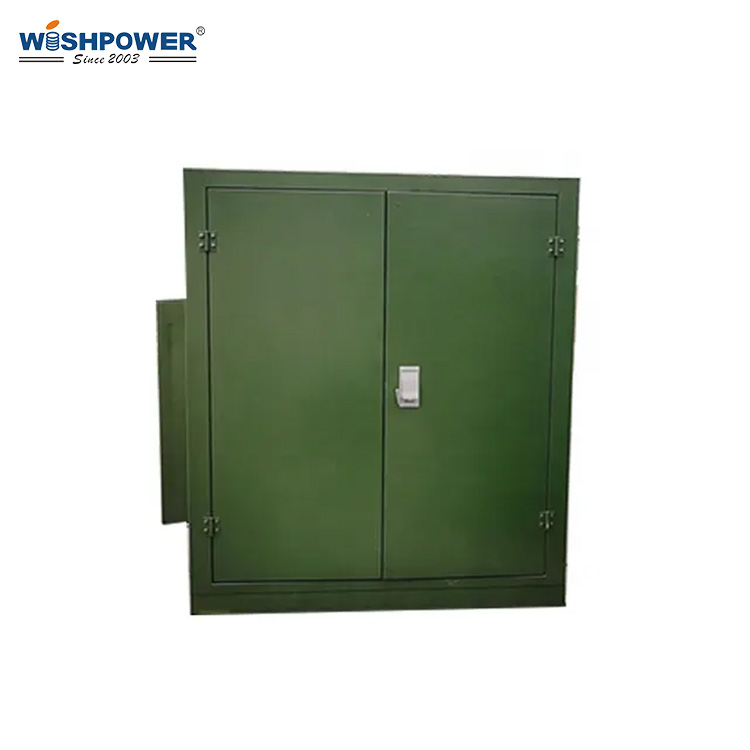What is Padmount substation?
The Padmount substation for the supply of power to urban, suburban, and rural backgrounds is floor standing substation. The floor-standing substation is normally mounted outside in a secure, tamper-proof enclosure fixed to a concrete plinth, and enclosed in that enclosure is where space is limited or aesthetics are a top priority. The distribution of low and medium-voltage electricity is accomplished by floor-standing substations that convert high-voltage electricity into a usable form that is safe for use in homes, businesses, and the light industry.

Key Floor Standing Substations Features
Compact, Secure Design
One of the big selling points of floor-standing substations is their compact, ground-mounted design, which makes them easy to place in locations that traditional substations cannot. It is normally a tamper-proof, encasing metal case protecting the internal components from environmental factors as well as unauthorized access for high safety and reliability.
High to Low Voltage Conversion
Thus, the floor-standing substation is used to step down the high-voltage electricity in the main power line to a lower voltage compatible with distribution to the local consumers. By way of a transformer inside the substation, the voltage level can be changed to meet the requirements of the application.
Minimal Aesthetic Impact
The low profile of such substations contributes to minimal visual impact to their surroundings and this makes floor-standing substations suitable for such settings where protection of the surrounding environment or aesthetic urban elements is important. Usually, they are painted in neutral colors and skillfully placed, near buildings, land spaces, or at property lines, for example.
Weatherproof Enclosures
As a rugged weather-resistant material panel mounted substations are designed to withstand rain, snow, and extreme temperatures. Enclosures tend to be sealed and insulated to keep moisture, dust, and other contaminants from entering and possibly damaging the components contained within.
Applications of Floor-Mounted Substations
Urban and Residential Areas
Floor-mounted substations are usually used in urban or residential areas to provide power to homes, apartment complexes, small businesses, and other industrial locations. These areas are ideal for them because their design is compact and unobtrusive, and you can place them close to end users without disturbing the local environment.
Commercial Complexes
For example, shopping centers, office buildings, and all other commercial facilities use floor-mounted substations to supply a stable and secure power supply. Since they can be installed near a commercial complex, they provide for more efficient low-voltage power distribution with minimum losses.
Industrial Sites
Also, floor-mounted substations can serve smaller industrial facilities, namely manufacturing plants or distribution centers, for reliable power distribution in a compact form factor. Customized floor-standing substations are common for these sites, but they are adapted to each site’s particular power demands from industrial equipment and machinery.
Renewable Energy Projects
Pedestal substations can be utilized in renewable energy applications (eg wind and solar farms) to interface renewable energy power into local grids. Renewable Energy, besides meeting the growing energy demand of this era, might help them step down the high voltage power generated to an appropriate and safe grid distribution level.
Market Trends for Floor-standing Substations
Increasing Urbanization: With the evolution of urbanization around the world, the need for efficient power distribution solutions, compact in form factor, and harmonious in their integration with the urban landscape, increases.
Renewable Energy Integration: With clean energy projects increasing worldwide, floor-standing substations are being implemented to integrate renewable energy with local grids, while also driving the global move to a sustainable power.
Technological Advances: Floor standing substations, the smart grid technology as well as the components for remote monitoring in that it can monitor it in real-time, becomes more efficient in case of operation and with predictive maintenance.
Future Prospects for Floor-standing Substations
As demand for power increases and technology improves, floor-standing substations are forecast to make an important contribution to today’s modernization of distribution networks. Compact, flexible, and safe, their design matches well with urban centers, renewable energy projects, and developing regions. However, future improvements in materials, cooling technology, and automation will further improve the functionality, reliability, and service life of these devices. Intelligent monitoring systems will play an integral role in efficient, resilient, and sustainable power distribution as floor-standing substations are added.
If you have different opinions or want to know more, please leave a message on the website or contact us directly at info@wishpower.net

















